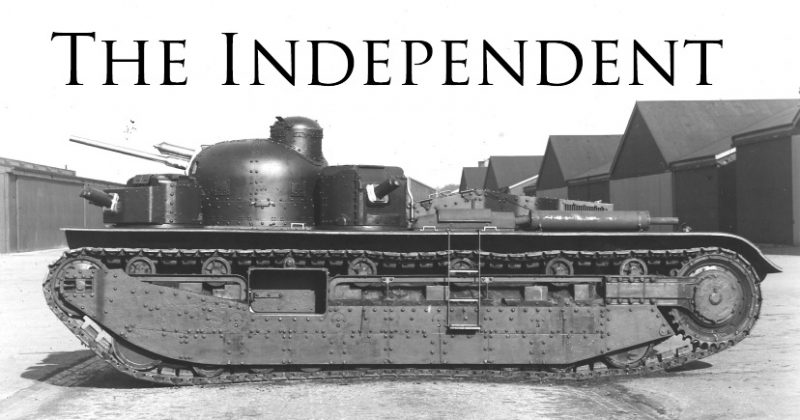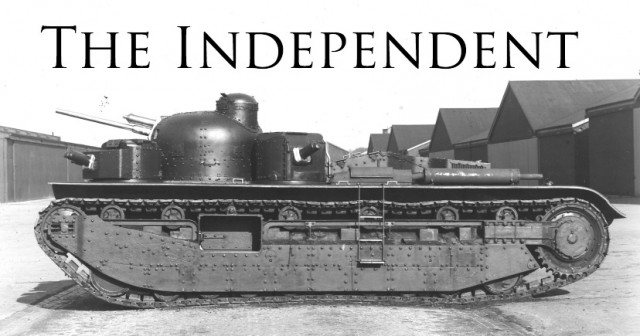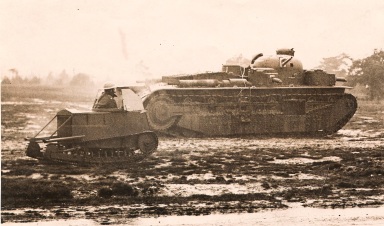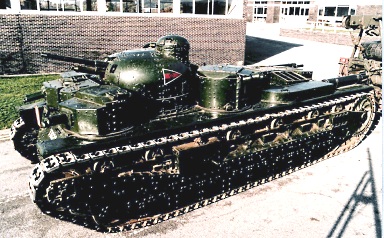The Tank Museum reports:
The Independent is unique, no others of the type were built and it was only ever regarded as an experimental machine.
As first conceived, by the War Office in 1922 it was going to be a very low profile tank with no turrets and a gun mounted at the front. It was also going to be very long, suggesting that at this time the War Office was still concerned about wide and extensive trenches, typical of the First World War. As actually built by Vickers Ltd. in 1926 it was still long but now featured a cluster of five turrets at the front, a central one mounting a 3 pounder (47mm) gun and four smaller turrets each fitted with one Vickers .303 inch, water-cooled machine-gun. The tank required a crew of eight men. The man in charge of tank production for Vickers at this time was Sir George Buckham.
It was called the Independent because it was expected to be capable of independent action, spitting fire in all directions. But in fact the General Staff could never make up its mind whether it was an experiment or the first of a new generation of tanks. It was powered by a 350hp, air-cooled V-12 engine by Armstrong-Siddeley, which had a voracious appetite for oil and, since it had to be narrow in order to travel by train, it was far too long in relation to its width so that in due course it started to peel apart at the back, the track frames breaking away from the hull by the power of its brakes and the rear end had to be rebuilt.
Left: The Independent with one of the tiny one-man Carden-Loyd Tankettes during the parade for the Dominion Premiers held on Camberley common, 13 November 1926.
Because it was unique replacement parts were very expensive, a new set of tracks for instance when the original ones wore out, but it was used for experimental purposes until 1935 when it was retired to Bovington, totally worn out. One very curious feature is the door, or hatch in each side. When it was still in the design stage it was inspected by some Royal Tank Corps officers who were invited to make comments. The only one they made which was carried out was that these hatches should be wide enough to take a standard Army stretcher, fully unfolded, which does not suggest that they had a lot of faith in it.
The Independent had a top speed of 20 miles per hour, which was very respectable for its day, but petrol consumption was about one mile per gallon while the engine got through lubricating oil at the rate of 4.5 gallons per hour. The tank actually weighed 29 tons and armour protection at the front, where the crew were, was about 28mm thick.
Right: Taken on 20 November 1986, outside what is now the Archive and Library. From this angle you can see four of the tank’s five turrets and the big crew hatch in the side.
During the Second World War Independent is reputed to have been used as part of the defences of Bovington Camp.
Source: The Tank Museum
A message from the Tank Museum:
“Please Support Us: As a charity, we rely on public support for all our activities. Our work is funded entirely by people like you. With your support, we can continue to create content. With the right support we might be able to do it more regularly – and can be even more ambitious. Please Click on the Banner Below”




